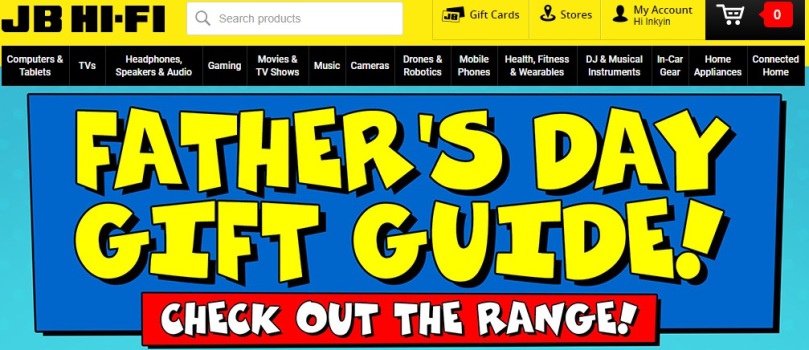
Hi everyone,
this week I will be discussing Tencent’s innovative business model. I stumbled upon this company and realized that they are the developer of WeChat. As I’ve started using WeChat, I thought it would be interesting to look at Tencent and what makes them innovative.
Tencent was established in 1998 in China and is a leading provider of internet value added services. Their vision is to become the most respected internet enterprise and mission is to enhance the quality of life through internet services (Tencent 2018). The company states “with each new product and invention, Tencent strives to embrace philanthropy, expand the internet, and be a model for all corporations who strive to improve our world through technology” (Tencent 2018). As of June 2018, the companies market cap is at $491.3 Billion and it is ranked 25th on the list of Forbes’s innovative companies of 2018 (Forbes 2018). The company is the largest business to consumer (B2C) e-retailer in China. Services provided range from social network, web portals, e-commerce, education, comics, entertainment services, and multiplayer online games (Vizologi 2018; Tencent 2018b).

What makes Tencent different from competitors like Facebook and Amazon?

It’s simple…Their revenue model isn’t the standard revenue model where revenue is generated through advertising.
The multi-billion dollar business generates revenue through millions of micro-transactions (Anthony 2013). Value added services is their main stream of revenue. The value added services are available on their social media platforms, gaming platforms, and mobile games (Forbes 2018). An example of a value added service the company provides for popular games is that users can pay for fancy weapons and costumes for their online VIP rooms and avatars (The Economist 2014). Other revenue is from digital content subscriptions, membership subscriptions, advertisement, and online games (The Conversation 2018). Below is the breakdown of Tencent’s revenue for Q3 2017 and it demonstrates that the company does not rely on advertising revenue.

Image source: Denlinger 2018
Another component that makes Tencent innovative is that they have payment options through their social networks. Tenpay is the second largest online payment platform across China. It is a comprehensive and integrated online payment platform that allows for B2B, B2C, and C2C interactions (Tencent 2018b). WeChat Pay users can make payment through the app providing a safe and efficient transaction. Another payment solution is QQ Wallet, this app has multiple payment options, QR code, NFC payment, and bank card payment. The QQ Wallet provides a comprehensive experience for their users which incorporates payment, life services, government services, public services, and financial services (Tencent 2018b).
Before doing research for this post, I had no idea just how big and influential Tencent is in China. The company has managed to successfully generate revenue through value added services, creating an innovative business model. The lives of people are influenced everyday with these services and is integrated into the daily routine of consumers.
As a user of WeChat I am pleased with how their app is developed. Does anyone use WeChat, QQ or any other services?
References
Anthony, S 2013, The three innovative companies of 2013, Harvard Business Review, 31st December, viewed 4th of September 2018, <https://hbr.org/2013/12/the-three-most-innovative-companies-of-2013 >
Denlinger, P 2018, Does Tencent have a better revenue model than facebook?, Pandaily, 24th May, viewed 5th September 2018, <https://pandaily.com/does-tencent-have-a-better-revenue-model-than-facebook-pd/ >
Forbes 2018, The world’s most innovative companies, Forbes, viewed on 4th September 2018, <https://www.forbes.com/companies/tencent-holdings/?list=innovative-companies >
Tencent (n.a), Tencent, viewed 4th September 2018, <https://www.google.com.au/url?sa=i&rct=j&q=&esrc=s&source=images&cd=&cad=rja&uact=8&ved=2ahUKEwi-vtPy_p_dAhXHFYgKHcFICVAQjRx6BAgBEAU&url=https%3A%2F%2Fwww.techzim.co.zw%2F2016%2F09%2Fchinas-new-valuable-company-tencent-owners-qq-wechat%2F&psig=AOvVaw2J1OloVM1yHlEldBkEwMWj&ust=1536103662193622>
Tencent 2018, Core Values, viewed 4th September 2018, <https://www.tencent.com/en-us/culture.html >
Tencent 2018b, Company Structure, viewed 4th September 2018, <https://www.tencent.com/en-us/system.html >
The Conversation 2018, How Tencent became the world’s most valuable social network firm – with barely any advertising, The Conversation, 19th January, viewed 5th September 2018, <https://theconversation.com/how-tencent-became-the-worlds-most-valuable-social-network-firm-with-barely-any-advertising-90334 >
The Economist 2014, Tencent’s worth, 24th June, viewed 4th of September 2018, <https://www.economist.com/business/2014/06/25/tencents-worth >
Vizologi 2018, Tencent business model canvas, Vizologi Inc., viewed 4th September 2018, <https://vizologi.com/business-strategy-canvas/tencent-business-model-canvas/ >










